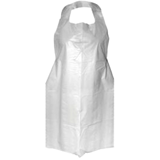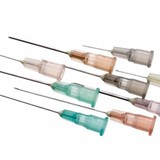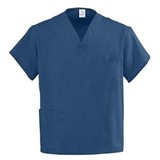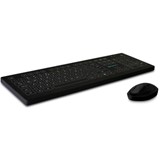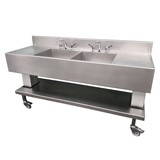The Medical Schools Outcomes Database (MSOD) and Longitudinal Tracking Project involves all medical schools in Australia and New Zealand and is also set to follow graduating medical students through their internships and into their chosen careers.
The project collects information from medical students on their educational and career intentions, to assist with medical workforce planning and evaluation of medical education programs.
For the past three years interest in becoming a GP has increased among first-year students, with general practice ranked the third-most-preferred career intention, after surgery and paediatrics.
Professor Justin Beilby, chair of the MSOD and Longitudinal Tracking Project board, says this is encouraging, given efforts in recent years to address Australia’s GP shortage.
“The Royal Australasian College of Physicians has recently commented that we need more general physicians who are able to coordinate the care of patients with very complex medical conditions,” he says. “This is in response to the increasing specialisation in medical care, particularly as our population ages, and medical care becomes more complex.”
Professor Beilby, who is also Executive Dean of the University of Adelaide’s Faculty of Health Sciences, says this coordination has traditionally and rightfully been done by GPs.
He says although the MSOD data shows the trend towards general practice is only slight at this stage – from 10.1 per cent of first year medical student preferences in 2006 to 10.4 in 2007 and 12 per cent in 2008 – it was a good start to addressing GP shortages.
“I think that GPs have been very good at marketing the benefits of their practice, lifestyle benefits and flexibility. Other areas of practice, such as pathology, may have to take a similar approach to attract students.”
The MSOD figures reveal that from 2006-2008 only one per cent of first year students hade a preference for a career in pathology, an area where there is already a national shortage of practitioners.
This is the first time longitudinal tracking data from the project has been publicly released. The students who participated in the study pilot in 2005 completed their degrees last year, so data now exists on how their career intentions changed throughout the course of their studies.
Professor Beilby says one of the benefits of the MSOD Project is that the student preference data can reveal areas where there may be a future skills shortage so that strategies can be developed to address these shortages.
The data can also be used to evaluate whether these strategies are working. For instance, he says the upward swing in 2008 first-year-student preferences for a career in gynaecology and obstetrics could be a response to both the ongoing need for skills in women’s health and delivering babies, but also in efforts to address professional indemnity issues for this specialist group.
Other data gathered for the project show:
- Surgery and paediatrics are the top two ranking career preferences amongst commencing students: surgery was 19 per cent in 2006, 19 per cent in 2007 and 34 per cent in 2008 while paediatrics was 12 per cent in 2006, 11 per cent in 2007 and 14 per cent in 2008.
- In 2008, 70 per cent of commencing students had not yet decided their specialisation.
“The MSOD will be a powerful tool that gives us the chance to compare different curriculum delivery models, planning and workforce innovations, to see if they are effective, and to see if student career intention translates into actual careers,” Professor Beilby says.
The MSOD project is a collaboration of Medical Deans Australia and New Zealand, the Commonwealth Department of Health & Ageing, National Health Workforce Secretariat, Confederation of Postgraduate Medical Education Councils, Federation of Rural Australian Medical Educators, Rural Undergraduate Support & Coordination, Australian Medical Students Association, Australian Rural Health & Education Network, National Rural Health Network and Australian Indigenous Doctors Association.
For more information on the MSOD project visit www.medicaldeans.org.au
- Suppliers
- New to MedicalSearch? Book a Demo
- Advertise with us
- Login
- Email Marketing
- Buyers
- Get Quotes
- Articles & Ideas
- Login
- Subscribe to newsletter
- My Details
- Get Quotes
- Accident & Emergency Care
- Aged Care & Disability
- Anaesthesia & Respiratory Care
- Beauty & Wellness
- Cardiology & Cardiac Surgery
- Commercial Cleaning & Laundry Supplies
- Dental Care & Oral Surgery
- Diagnostic Instruments & Medical Imaging
- Disinfection & Sterilisation
- ENT & Audiology
- Gynaecology & Obstetrics
- Homecare & Consumer Medical
- Hospital Equipment & Supplies
- Intensive Care Unit
- Laboratory & Pathology
- Medical Apparel
- Medical Devices & Products
- Medical Fridges & Freezers
- Medical Storage & Filing
- Medical Waste Management
- Optometry & Ophthalmology
- Orthopaedics & Podiatry
- Paediatrics & Neonatology
- Patient Monitoring & Management
- Physiotherapy & Rehabilitation
- PPE & Infection Control
- Single Use Medical Consumables
- Surgical Tools & Supplies
- Treatment Beds, Tables & Couches
- Veterinary Equipment
- Wheelchairs & Mobility Aids
- Get Quotes
- Accident & Emergency Care
- Aged Care & Disability
- Anaesthesia & Respiratory Care
- Beauty & Wellness
- Cardiology & Cardiac Surgery
- Commercial Cleaning & Laundry Supplies
- Dental Care & Oral Surgery
- Diagnostic Instruments & Medical Imaging
- Disinfection & Sterilisation
- ENT & Audiology
- Gynaecology & Obstetrics
- Homecare & Consumer Medical
- Hospital Equipment & Supplies
- Intensive Care Unit
- Laboratory & Pathology
- Medical Apparel
- Medical Devices & Products
- Medical Fridges & Freezers
- Medical Storage & Filing
- Medical Waste Management
- Optometry & Ophthalmology
- Orthopaedics & Podiatry
- Paediatrics & Neonatology
- Patient Monitoring & Management
- Physiotherapy & Rehabilitation
- PPE & Infection Control
- Single Use Medical Consumables
- Surgical Tools & Supplies
- Treatment Beds, Tables & Couches
- Veterinary Equipment
- Wheelchairs & Mobility Aids
Trusted by 520,000 Australian medical buyers
Buyers
- Discover products & solutions
- Login
- Subscribe To Newsletter
- Browse All Products
- Read Articles
Suppliers
Advertise
- Promote your products & solutions
- New to MedicalSearch? Book a Demo
- Login / Forgot Password
- Advertise Your Products
- Success Stories
- Email Marketing
- Suppliers
- Advertise with us
- Login
- Email Marketing
- Buyers
- Get Quotes
- Articles & Ideas
- Login
- Subscribe to newsletter
- My Details
Get Quotes
- Accident & Emergency Care
- Aged Care & Disability
- Anaesthesia & Respiratory Care
- Beauty & Wellness
- Cardiology & Cardiac Surgery
- Commercial Cleaning & Laundry Supplies
- Dental Care & Oral Surgery
- Diagnostic Instruments & Medical Imaging
- Disinfection & Sterilisation
- ENT & Audiology
- Gynaecology & Obstetrics
- Homecare & Consumer Medical
- Hospital Equipment & Supplies
- Intensive Care Unit
- Laboratory & Pathology
- Medical Apparel
- Medical Devices & Products
- Medical Fridges & Freezers
- Medical Storage & Filing
- Medical Waste Management
- Optometry & Ophthalmology
- Orthopaedics & Podiatry
- Paediatrics & Neonatology
- Patient Monitoring & Management
- Physiotherapy & Rehabilitation
- PPE & Infection Control
- Single Use Medical Consumables
- Surgical Tools & Supplies
- Treatment Beds, Tables & Couches
- Veterinary Equipment
- Wheelchairs & Mobility Aids
Get Quotes
- Accident & Emergency Care
- Aged Care & Disability
- Anaesthesia & Respiratory Care
- Beauty & Wellness
- Cardiology & Cardiac Surgery
- Commercial Cleaning & Laundry Supplies
- Dental Care & Oral Surgery
- Diagnostic Instruments & Medical Imaging
- Disinfection & Sterilisation
- ENT & Audiology
- Gynaecology & Obstetrics
- Homecare & Consumer Medical
- Hospital Equipment & Supplies
- Intensive Care Unit
- Laboratory & Pathology
- Medical Apparel
- Medical Devices & Products
- Medical Fridges & Freezers
- Medical Storage & Filing
- Medical Waste Management
- Optometry & Ophthalmology
- Orthopaedics & Podiatry
- Paediatrics & Neonatology
- Patient Monitoring & Management
- Physiotherapy & Rehabilitation
- PPE & Infection Control
- Single Use Medical Consumables
- Surgical Tools & Supplies
- Treatment Beds, Tables & Couches
- Veterinary Equipment
- Wheelchairs & Mobility Aids
Trusted by 520,000 Australian medical buyers


